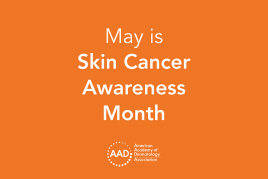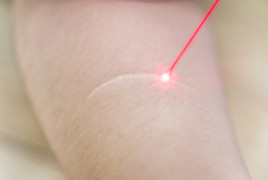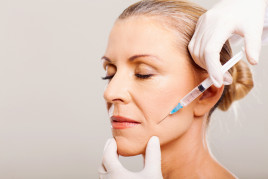Eczema types: Atopic dermatitis diagnosis and treatment
Treatments for atopic dermatitis
Treatment can relieve your symptoms and help you live more comfortably if you are diagnosed with atopic dermatitis.
Dermatologists recommend moisturizer for everyone who has atopic dermatitis. Keeping your skin well moisturized helps to prevent cracks and fissures in your skin.
How do dermatologists diagnose atopic dermatitis?
To diagnose atopic dermatitis (AD), a board-certified dermatologist carefully examines your (your child’s) skin and asks questions.
To help ensure that your dermatologist has accurate information, it’s helpful to answer these questions before your appointment:
Do any of your blood relatives have AD, asthma, or hay fever?
What are your symptoms?
When did the symptoms begin?
Where do the rashes appear on the skin?
Providing your dermatologist with this information can be very helpful. AD tends to wax and wane, so you may have clear skin when you see your dermatologist.
A skin exam along with information about your health and symptoms may be all that are needed to diagnose AD. Some people also need a skin biopsy.
Your dermatologist can quickly and easily perform a skin biopsy during your appointment. To do this, your dermatologist will numb and remove a tiny amount of skin. When looked at under a microscope, this can provide valuable information.
Having a skin biopsy can also help your dermatologist select the best treatment.
How do dermatologists treat AD?
This condition cannot be cured, but proper treatment can control it. A treatment plan created by a board-certified dermatologist can help:
Reduce flare-ups
Ease symptoms, such as itch and pain
Prevent AD from worsening
Decrease your risk of developing thickened skin, which tends to itch all the time
Keep your skin moist
Lower your risk of infection
While a dermatologist tailors each AD treatment plan to a patient’s individual needs, most treatment plans include the following:
Skin care: A skin care plan for AD involves:
Bathing
Applying moisturizer
Being gentle with your skin
Your dermatologist will explain how to use baths and moisturizer to help heal your skin.
Trigger management: AD can make the skin very sensitive and very reactive. Things that you come into contact with every day can cause AD flare-ups. Anything that causes AD to flare is known as a trigger.
Everyone has unique eczema triggers, so it’s important to find your triggers and figure out how to avoid them. Common triggers include skin care products, weather (cold or hot), wool clothing, stress, and laundry detergents that contain fragrance.
Your dermatologist can help you figure out what triggers your AD. To learn more about eczema triggers, go to: Eczema triggers
Medication applied to the skin: Your treatment plan may include medication that you apply to your skin, light treatments, medication that works throughout the body, or some combination of these.
Most people can control AD with medication that they apply to their skin. When this is part of your treatment plan, you may apply one or more of the following:
Applying medication to your skin as directed can improve your skin’s ability to keep out germs and everyday substances that can irritate it. This means fewer flare-ups. The medication should also improve your skin’s ability to lock in moisture, so you’ll have fewer cracks and fissures.
Research breakthroughs are giving patients with AD new ways to treat this condition.

For most people, gentle skin care, trigger management, and medication that you apply to your skin can control AD.
If you have an infection on your skin, your dermatologist will also treat this. To treat an infection, you may need to apply a medication to your skin or take medication.
Some people need stronger treatment for their AD. For these patients, a dermatologist may prescribe phototherapy or a medication that works throughout the body.
Phototherapy: This is another word for light treatments that can safely and effectively treat AD, even in children. Phototherapy works by exposing your skin to ultraviolet (UV) light. It’s given at a dermatologist’s office, hospital, or phototherapy treatment center.
For phototherapy to be effective, you will need 2 to 3 treatments per week for the amount of time prescribed by your dermatologist. For most people, this means going to the treatment center 2 to 3 times per week for a few weeks to a few months.
If you find it difficult to keep your appointments for phototherapy, tell your dermatologist. Don’t try to use tanning beds instead of phototherapy. Phototherapy differs from tanning beds, which pose risks to your health.
Using a tanning bed to treat AD increases your risk of developing skin cancer dramatically. If you use tanning beds before age 35, you can increase your risk of melanoma, the deadliest form of skin cancer, by 59%.
Medication that works throughout your body: This may be prescribed to treat widespread AD. Also called “systemic treatment,” this medication works on the immune system and can bring tremendous relief.
To learn more about this type of treatment, go to: When your child needs strong medicine to control eczema
What is the outcome for someone who has AD?
By partnering with a board-certified dermatologist, you can control AD. With control, it’s possible to relieve the extremely dry skin, alleviate the itch, and reduce flare-ups that lead to rashes.
Sometimes, it takes trying a few different medications or light treatments to find the one that works best for you.
To get the best possible results from treatment, dermatologists also recommend making some lifestyle changes. You’ll find the changes that dermatologists recommend at: Atopic dermatitis: Self-care
Image
Getty Images
References American Academy of Dermatology. AAD Fact Sheet: Eczema. Revised December 2019.
Eichenfield LF, Call RS, et al. “Long-term safety of crisaborole ointment 2% in children and adults with mild to moderate atopic dermatitis.” J Am Acad Dermatol 2017;77:641-49.
Eichenfield LF, Tom WL, et al. “Guidelines of care for the management of atopic dermatitis Section 1. Diagnosis and assessment of atopic dermatitis.” J Am Acad Dermatol. 2014;70:338-51.
Eichenfield LF, Tom WL, et al. “Guidelines of care for the management of atopic dermatitis Section 2. Management and treatment of atopic dermatitis with topical therapies.” J Am Acad Dermatol 2014;71:116-32.
Hilton L, “Rethink the rescue approach when treating atopic dermatitis.” Dermatol Times. September 12, 2019. Last accessed January 31, 2020.
McAleer MA, O’Regan GM, et al. “Atopic dermatitis.” In: Bolognia JL, et al. Dermatology. (fourth edition). Elsevier, China, 2018: 208:27.
Sidbury R, Davis DM, et al. “Guidelines of care for the management of atopic dermatitis Section 3. Management and treatment with phototherapy and systemic agents.”
 Think sun protection during Skin Cancer Awareness Month
Think sun protection during Skin Cancer Awareness Month
 How to care for your skin if you have lupus
How to care for your skin if you have lupus
 Practice Safe Sun
Practice Safe Sun
 Sunscreen FAQs
Sunscreen FAQs
 Fade dark spots
Fade dark spots
 Hidradenitis suppurativa
Hidradenitis suppurativa
 Laser hair removal
Laser hair removal
 Scar treatment
Scar treatment
 Botox
Botox
 Kids' camp - Camp Discovery
Kids' camp - Camp Discovery
 Dermatologist-approved lesson plans, activities you can use
Dermatologist-approved lesson plans, activities you can use
 Find a Dermatologist
Find a Dermatologist
 Why choose a board-certified dermatologist?
Why choose a board-certified dermatologist?